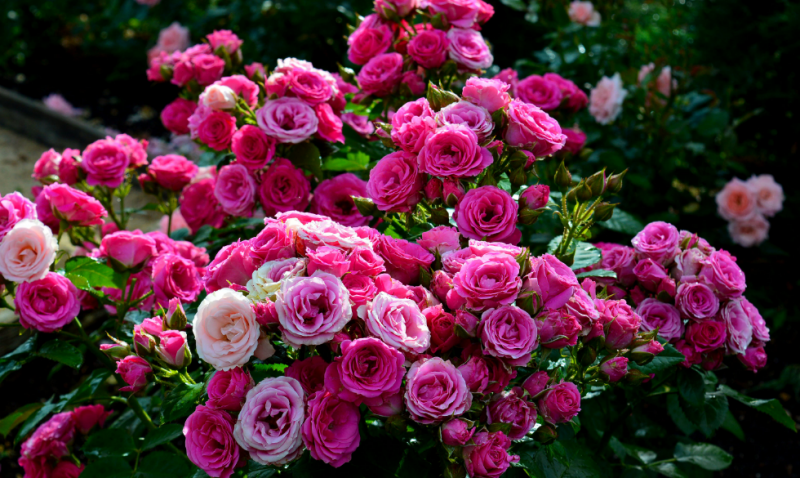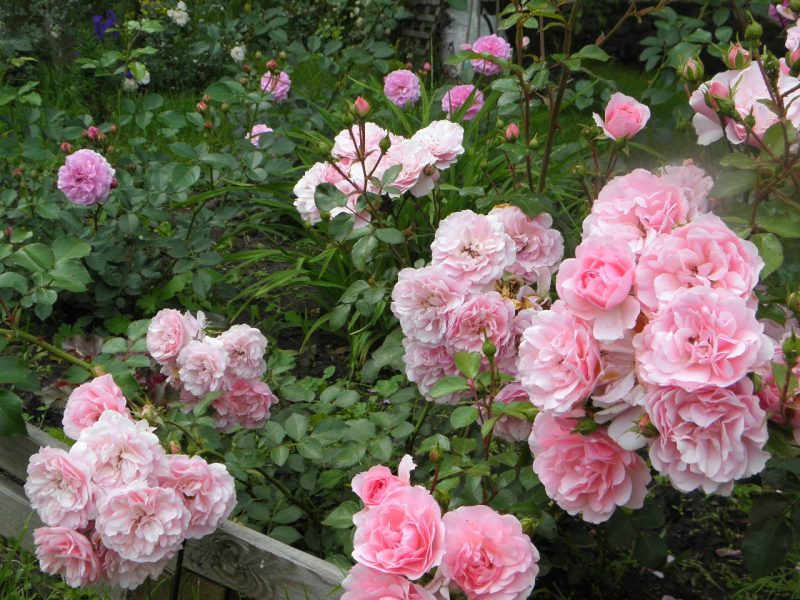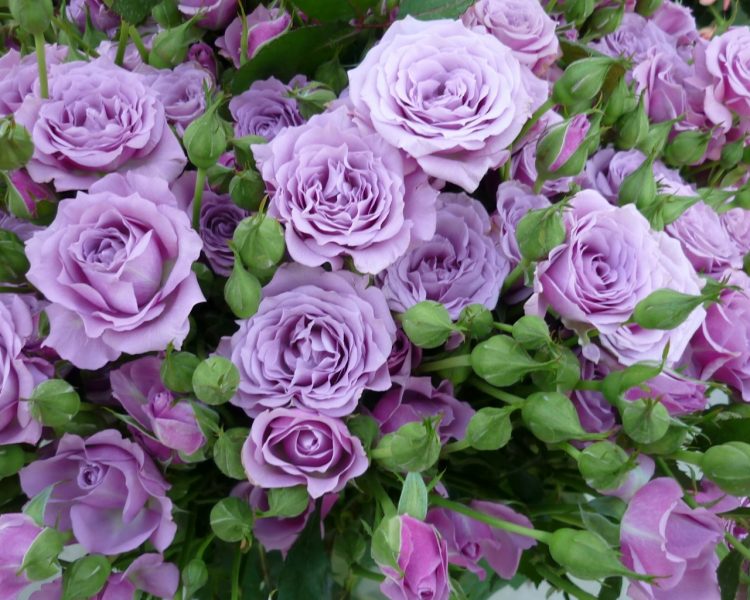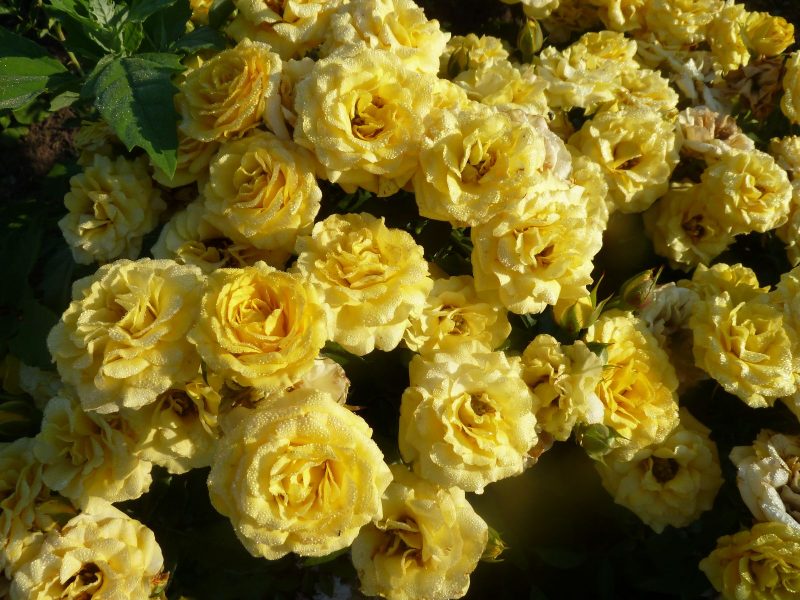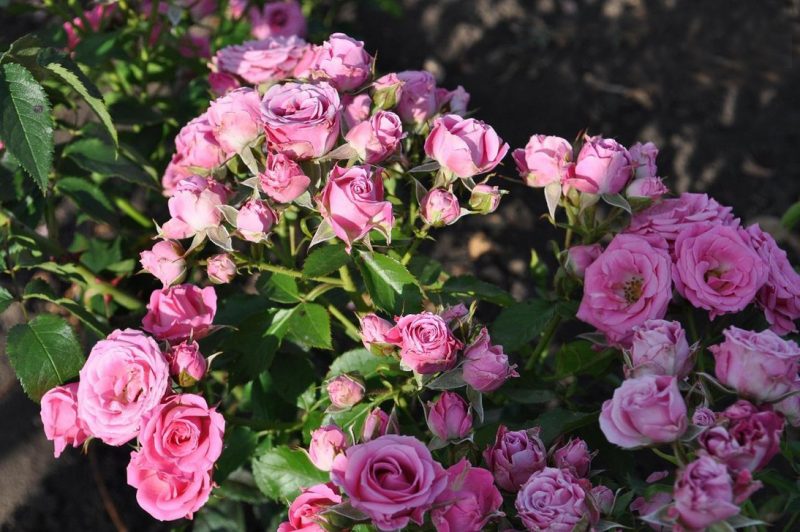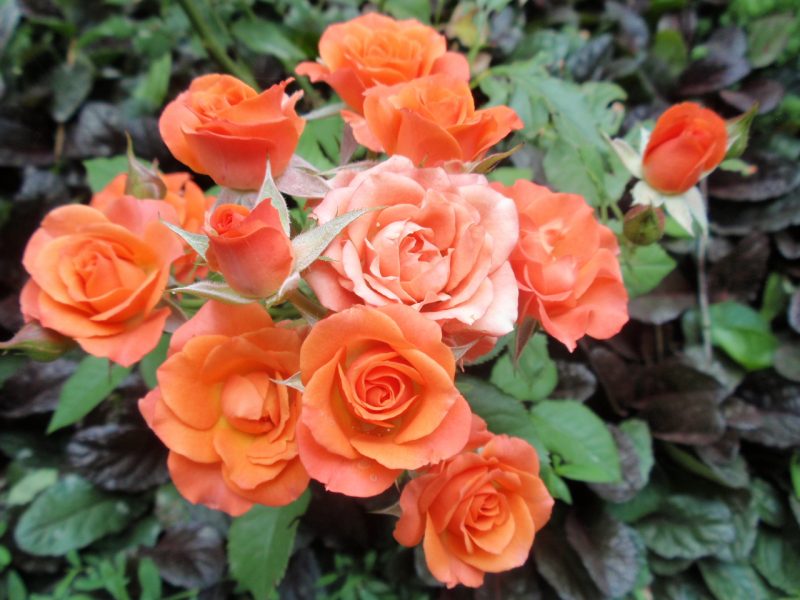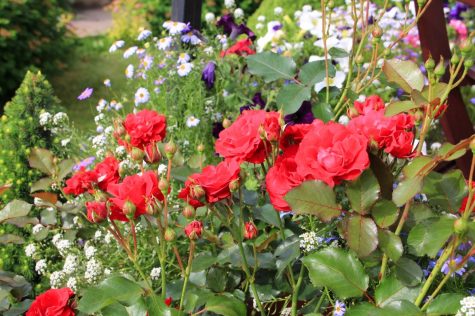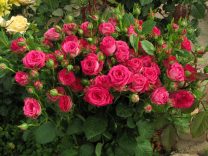Roses have been cultivated for many centuries, during which breeding work did not stop. The result was the emergence of many very spectacular varieties. Currently, the latter are classified and assigned to various groups, among which roses Spray are very popular among florists and gardeners.
Material Content:
Spray rose - what is this flower?
To understand what this rose spray is, it is enough to study a little information about a group of varieties, united under this name. Not so long ago, she was singled out from a wider group of Floribunda, whose representatives are especially loved by landscape designers.
The main characteristics of the Spray group are considered to be stunted plants (maximum height does not exceed 90 cm) and abundant flowering, during which about 15 medium-sized flowers bloom.
Description of varieties
The most popular flower varieties of the Spray group are presented below:
- Typhoon - bushes with a height of up to 70 cm are covered in summer with lush orange inflorescences that caress the gaze before the arrival of autumn frosts.
- Spray rose Lydia - the result of the work of the Dutch breeding institute. The height of the bush does not exceed a height of 70 cm and is especially appreciated for resistance to cold, as well as immunity to various diseases. Blossoming of small flowers with pink petals is observed throughout the summer season.
- Shine is an American variety that is considered the most successful among yellow roses. Neat bushes are loved around the world for their delicate aroma and plenty of flowers, the diameter of which is only 4 cm.
- Variety Tamango - a spectacular variety, often used due to stunting (50 cm) for framing borders.During flowering, which lasts until the autumn frosts, many bright red buds bloom, reaching a diameter of 7.5 cm after blooming. At this time, the garden is filled with a pleasant aroma.
- Victoria is a representative of the Spray group with pink flowers, which burns out to a very pale tone as they bloom.
- Fire Flash is another promising variety whose two-tone color cannot leave gardeners indifferent. Small buds are painted in yellow and red tones, creating an atmosphere of warmth and coziness in the garden.
- Stars and Strips - during the flowering of rose bushes of this variety, small white flowers adorned with raspberry stripes are observed. The aroma that can be enjoyed throughout the summer, while the plants bloom, has a sweetish notes.
- Rosa Makarena is a delicate variety distinguished by pinkish-yellow inflorescences consisting of 10-15 flowers. Bushes are suitable not only for garden design, but also for terraces, balconies, where a crop with a height of up to 60 cm grows in pots.
- Fair King is a luxurious variety represented by bright red roses that appease the eyes of passers-by and a grower for a long time. The height of the bushes can reach 80 cm.
Site selection and soil preparation
In order for the flower to please its beauty for a long time, you should correctly plant the bush in the open ground, taking into account the place and requirements for the soil composition. For roses Spray, you need to choose sunny areas. Due to the susceptibility of the crop to burnout and loss of brightness, the plants can also be planted in slightly shaded places.
For varieties of this group, the soil is of no small importance. You should start preparing it in the fall, when the site is dug up to the depth of the shovel bayonet with the simultaneous introduction of humus, peat or compost. The rose will feel fine on fertile soil with a loose, well-draining structure.
Landing at the cottage
The optimal time for planting roses from the group Spray falls in the spring, when the threat of return frosts passes. In the southern regions with a mild climate, planting in autumn is permissible: the flowers will have time to take root and winter well.
Landing technology consists in performing simple manipulations:
- 50x50 cm holes are dug in a selected and pre-prepared area.
- If groundwater lies close enough, then a drainage layer in the form of pebbles, small gravel or other building material is placed at the bottom of the planting pits.
- Plants descend into the wells, after which the roots straighten.
- Plants are instilled, after which the trunk circles are compacted to exclude the presence of air layers around the roots, leading to the development of rot.
- After planting, seedlings are watered abundantly.
When the earth absorbs moisture, it is recommended to mulch it under roses with peat, which is a source of nutrients.
Care and growing flowers
Roses Spray, the planting and care of which are quite simple, still need systematic care from the grower.
- Watering - so that the plant develops fully and does not suffer from drought, it is recommended to regularly carry out water procedures, moistening the bush under the root in order to avoid the development of fungal diseases. When organizing an irrigation system, one should be guided by the principle of moderation.
- Soil cultivation - after natural or artificial precipitation, near-stem circles are loosened and cleaned of weed vegetation. You can cover the beds with mulch, which will preserve the loose soil structure, cleanliness, and also prevent the rapid evaporation of moisture.
- Fertilizing and fertilizing - Spray roses are fed throughout the growing season. Depending on the growth phase, the composition of top dressing changes: in spring, the bushes are fed with nitrogen, which contributes to the rapid growth of shoots, and in the summer, at the stages of budding and flowering phases,The main nutrients are phosphorus and potassium.
- Pruning is an important part of care, which is carried out several times a year. In summer, faded inflorescences that are damaged and shoots growing inside are removed. When the flowering is completed completely, and the foliage falls, the branches are shortened to 20 cm. Regular pruning stimulates the development of new shoots and the formation of a large number of flowers.
- Preparing for winter - despite the fact that most varieties of roses Spray are cold-resistant, so that the plants wintered well, they should be covered. Trunk circles are covered with mulch, and scaffolds are formed above the bushes, covered with fir spruce or other non-woven material after the first frost. Roses are prone to rotting, so full shelter is carried out only when frosty weather sets in.
How can I propagate
The most popular method of propagating the Queen of Flowers from the Spray group is considered to be cuttings, which are carried out from late spring to fall.
At that time:
- thin processes of the lower tier are selected, which have 3-4 leaves;
- cuttings with 2 buds at the bottom and one leaf at the top are cut at an angle;
- planting material is buried in the ground, where it is covered with glass or bottles;
- cuttings are systematically ventilated and moistened;
- rooting is noted after 2 months.
Disease and Pest Prevention
Roses Spray are quite resistant to damage by pathogenic organisms, the development of which, as a rule, is noted in rainy weather. The most common are peronosporosis and gray rot. Fight diseases with the help of fungicidal drugs. Of the pests that can be observed on the shoots of the crop, aphids and spider mites are distinguished, which are easily destroyed by insecticide treatments.
In order to prevent rose spray in the spring is treated with a tank mixture containing an insecticide and copper-containing fungicide. It is also important to remove thickened shoots in a timely manner, preventing the development of fungus. And in the autumn, it is important to clean out all plant debris from under the bushes that serve as litter for the wintering pest stock.
Use in landscape design
Due to its low height, Spray roses are often used to frame garden paths. Plants also look luxuriously in the foreground in the front garden or in a composition with deciduous shrubs and conifers. Often roses can be seen on terraces, verandas as potted plants that perfectly complement the overall interior.
Rosa Spray is a spectacular plant that can vary depending on the variety in height, color and structure of flowers. However, all the representatives of the group are good and beautiful in their own way.


